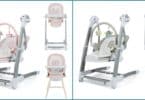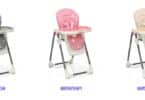We all know how curious kids can be. Leave them for a minute and they will find things not intended for their little hands(or noses). The Queensland Children’s Hospital (QCH) has unveiled a decade’s worth of statistics on items swallowed or inserted into noses by children, highlighting common culprits and the associated risks. Since its opening in 2014, the hospital’s emergency department has treated over 10,200 children for ingesting foreign objects, making it an important reminder of the hazards in everyday environments.
Top Ingested Items Over 10 Years
Beads, coins, and button batteries emerged as the most commonly ingested items by children needing emergency care at QCH. Also in the top five were Lego pieces and food items posing choking hazards. Magnets, marbles, and sharp objects, such as glass shards, rounded out the list, alongside fishbones and medications unsuitable for children.
While many of these items pass harmlessly through the digestive tract, some pose significant risks. Button batteries, for instance, can cause life-threatening injuries within hours, while magnets can create internal blockages or even perforate organs if multiple are swallowed.
The hospital also recorded over 1,650 cases of foreign objects lodged in children’s noses. Beads, Lego pieces, and small balls were the most frequent offenders, followed by seeds, nuts, and tiny toys.
Dr. Aaron Johnston, a QCH pediatric emergency consultant, emphasized the importance of prompt medical attention when a child swallows or inserts a foreign object.
“While 80% of ingested objects pass naturally, some can cause severe complications,” said Dr. Johnston. “Button batteries can burn through tissue in just two hours, and magnets can lead to ulcers or organ damage.”
With the holiday season approaching, Dr. Johnston urged parents to carefully inspect gifts, especially those from overseas, as they may not adhere to safety standards.
Why do kids put things up their noses?
- Exploration and Curiosity:
Young children are naturally curious about their bodies and surroundings. They may not fully understand what their nose is for, so they experiment by putting things in it. - Imitation:
Kids often mimic behaviors they see. If they observe someone touching their nose or using items like tissues, they might imitate by putting objects up their nose. - Sense of Play:
For toddlers, especially, sticking things up their noses can feel like a fun or silly game, especially if they get a reaction from an adult. - Sensory Exploration:
Children explore the world through their senses, including touch. Putting an object in their nose may feel interesting or ticklish, appealing to their sensory curiosity. - Attention-Seeking:
If a child learns that this behavior gets a strong reaction (like laughter or concern), they might repeat it for attention. - Lack of Understanding:
Kids may not grasp the consequences of their actions. They don’t realize that putting objects in their nose could be dangerous or uncomfortable. - Accidental:
Sometimes, they might not intend to “store” something in their nose but are just experimenting and it gets stuck.
Signs Your Child May Have Ingested a Hazard
If no immediate choking or distress occurs, symptoms may be subtle. Watch for:
- Drooling or vomiting
- Wheezing, coughing, or difficulty breathing
- Chest or abdominal pain
- Refusal to eat
- Fever or blood in vomit or stool
Parents should seek immediate medical help if any of these symptoms appear. In critical cases, such as suspected button battery or magnet ingestion, calling emergency services is essential.
Marking its 10th anniversary in 2024, QCH has provided over 3.4 million episodes of care to more than 455,000 children. The hospital’s insights into these incidents highlight the importance of vigilance and awareness in preventing such emergencies.
Top 10 Items Swallowed by Children (2014–2024):
- Beads
- Coins
- Button batteries
- Lego
- Food
- Magnets
- Glass
- Other types of batteries
- Marbles
- Medications
Top 10 Foreign Bodies Retrieved from Children’s Noses:
- Beads
- Lego
- Balls
- Seeds
- Nuts
- Toys
- Buttons
- Crayons
- Magnets
- Batteries
By being aware and understanding the risks, parents and caregivers can create safer environments for their curious kids, reducing the chances of these preventable emergencies.
More Parenting News:
- Left Behind: A Texas Mother’s Reckless Choice Puts Toddler in Danger
- New Federal Standard Set by CPSC to Improve Safety of Infant Support Cushions
- New Study Explains How Women’s Brains React to Cute Baby Faces







